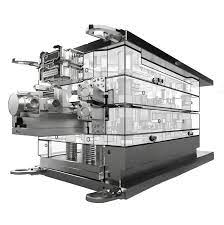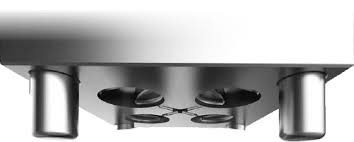Why Should You Go for Plastic Injection Molding?
In Injection Molding Tools, the desired shape is achieved by injecting a fluidized plastic material from a cylindrical form into a comparatively cool chamber. Injection molding is a process used to create plastic components. The desired shape is inverted in Making an Injection Mold, and molten plastic is poured under high pressure. A metal (often steel or aluminum) mold is constructed by a mold maker, who then uses high-precision machining to create the desired part’s features. From the smallest part to huge automobile body panels, Plastic Injection Molding is a common production method.
Injection molding of plastics is a common procedure.
If you want to know about Overmolding Vs Insert Molding then you should know about the mold, clamping unit, and injection unit are the three main components of Design Injection Mold machine. Throughout the injection & cooling processes, the mold is held under pressure by the clamping device. Its primary function is to secure the injection mold’s two halves during production.
During Design for Injection Molding, plastic is placed into a container on top of the injection mechanism, often in the form of pellets. Like a hot glue gun, the pellets are fed into the cylinder and heated until they melt. A motorized screw located inside the heating cylinder stirs the melting pellets and propels them to the cylinder’s outlet. When a certain quantity of material has built up in front of the screw, injection can commence. The screw regulates the force and velocity with which the hot plastic is forced into the mold through the sprue.
During the residence stage, the injection process is halted. The Plastic Injection Mold has been injected with molten plastic, and now the pressure is being exerted to ensure that every cavity has been filled.
The plastic is melted, poured into a Plastic Injection Mold Making, and left there to harden. The two parts of the mold are unmated once the clamping mechanism is opened. The finished product is released from the mold by means of an emitting rod and plate.
Extrusion
Like the above-described injection-molding machine of Injection Mold Manufacturers is the extruder. Plastic granules are heated as they travel along a thread, which is turned by a motor. When heated, the granules become a liquid that can be pushed through a die to create a long, tube-like shape. Once the extrusion has cooled, it takes on a solid form. The tube’s final form is established by the die’s design.
Several Benefits of Injection Molding:
- Repeatability of tight tolerances
- It is adaptable to a wide variety of materials
- Affordable wage rates
- Low amounts of waste scrap
- Reduced post-molding finishing requirements
- Contemplating Injection Molding’s Downsides
- Must spend a lot of money on new machinery
- Potentially high operational expenses
- Molding needs to be considered throughout the design phase of the parts.
Injection molding is a cutting-edge process for producing components. It is used to mass-produce everything from intricate technical parts to inexpensive trinkets, and it moves quickly.


Comments
Post a Comment